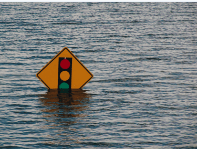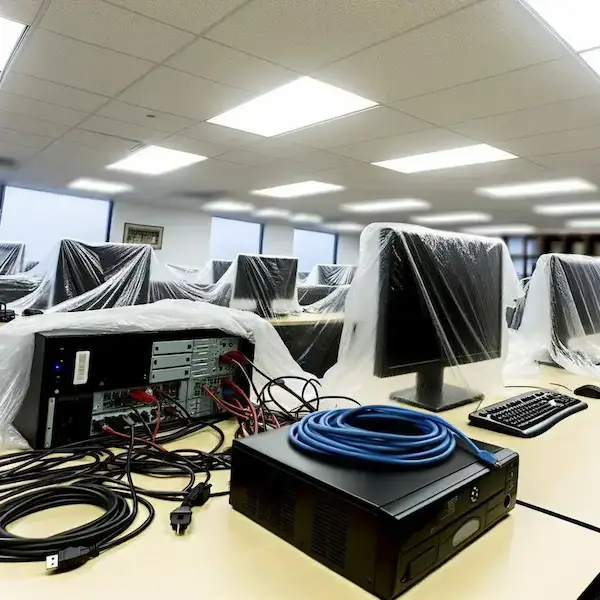
When hurricane season hits Florida, you hear a lot about “disaster recovery” and “minimizing downtime.” That’s important — but it’s only half the story.
What doesn’t get talked about enough?
The money-smart side of IT prep.
Because the same strategies that protect your business during a storm… are the same ones that keep it lean, fast, and flexible year-round.
Here's the mindset shift: Storm prep is business prep.
The businesses we see thriving through Hurricane Season don’t just check off boxes on an emergency plan. They build IT systems that work harder all the time — not just during a crisis.
So if you’re about to invest time or budget into prepping for storms, think bigger. These six IT moves don’t just keep the lights on — they help your business run smarter, save money, and stay flexible long after the winds die down.
1. Remote-Ready Teams Are Cost-Efficient Teams
Setting your team up for remote access used to be a luxury. Now, it’s just smart.
According to 2024 reports, companies save on average $10,600 per remote worker annually, with even higher collective productivity gains.
A secure, remote-capable setup means your people can keep working from home, the road, or wherever they’re safe.
And here's the kicker: businesses with remote systems tend to spend less on office infrastructure, tech maintenance, and even employee turnover. (Flexible work = happier teams.)
2. Cloud Storage Doesn’t Just Save Files — It Saves You From Outages
If all your company files are sitting on one on-premise server, you're one power outage away from a mess.
A 2018 review shows cloud-based recovery offers flexibility, reduced complexity, and lower downtime . Plus, redundancy (like multi-cloud) protects you from single-provider outages.
But move your key files to the cloud? Suddenly you're not just storm-ready — you're maintenance-light, space-saving, and scalable.
Cloud systems give you:
-
Instant access from anywhere
-
Automatic backup
-
Fewer hardware costs
-
Easier collaboration
It’s not just about avoiding loss — it’s about gaining agility.
3. Backup Generators Are Cheaper Than Downtime
Let’s talk real numbers.
Even a few hours of downtime can cost small businesses thousands — in lost productivity, missed sales, or data recovery fees. Worst of your reputation could be on the line.
A simple failover solution (like a UPS battery backup or generator) often costs far less than the price of a single major disruption.
That’s not fear talk. That’s just smart math.
4. Vendor Alignment Saves Time, Headaches, and Cash
If your IT team knows how to coordinate with your software vendors, internet provider, and cloud services before there’s an issue, you’ll avoid the "everyone pointing fingers" scenario.
We help our clients build those bridges — because in a crisis, the last thing you want is to spend hours figuring out who to call.
5. Planning Ahead Makes Insurance Claims a Breeze
No one likes dealing with insurance — especially post-storm. But if you’ve already documented your equipment, stored records securely, and mapped out your disaster plan, the claims process gets 10x easier. That means quicker payouts and less out-of-pocket surprise expenses.

6. Systems That Flex With the Forecast
Maybe the hurricane misses you. Great! But those IT systems you put in place to prepare?
They’re still paying off.
You now have:
-
Faster onboarding for new hires
-
Better collaboration tools for your team that allow you to work from anywhere
-
A clearer view of what tech actually supports your business
-
A leaner, more resilient operation that works in any weather
Make Your IT Earn Its Keep — Rain or Shine
Most companies only think about disaster recovery after a disaster.
We want you to be the company that looks back and says, “We didn’t just survive. We got stronger.”
So if you’re thinking about IT upgrades this season, don’t just ask “What do we need to stay safe?”
Ask:
What do we need to stay profitable, no matter what hits next?
Ready to face Florida Storms?
Our team helps businesses design IT systems that make sense all year long.
Schedule a 15-minute chat with a Four Winds expert and let’s make your tech work for your bottom line.
📞 941-315-2380 | Get Started

2 min read
Three Signs Your Business Needs Profession-al ITSupport
You own a small business, and you’ve been doing just fine without a dedicated IT guy. Your business, however, like everything else...
What Hurricane Season Taught Us: IT resilience for small businesses
At the start of the 2025 hurricane season, we talked about one thing: getting ahead of the storm. Not just with sandbags and bottled water, but with...

 We are here to help!
We are here to help!

